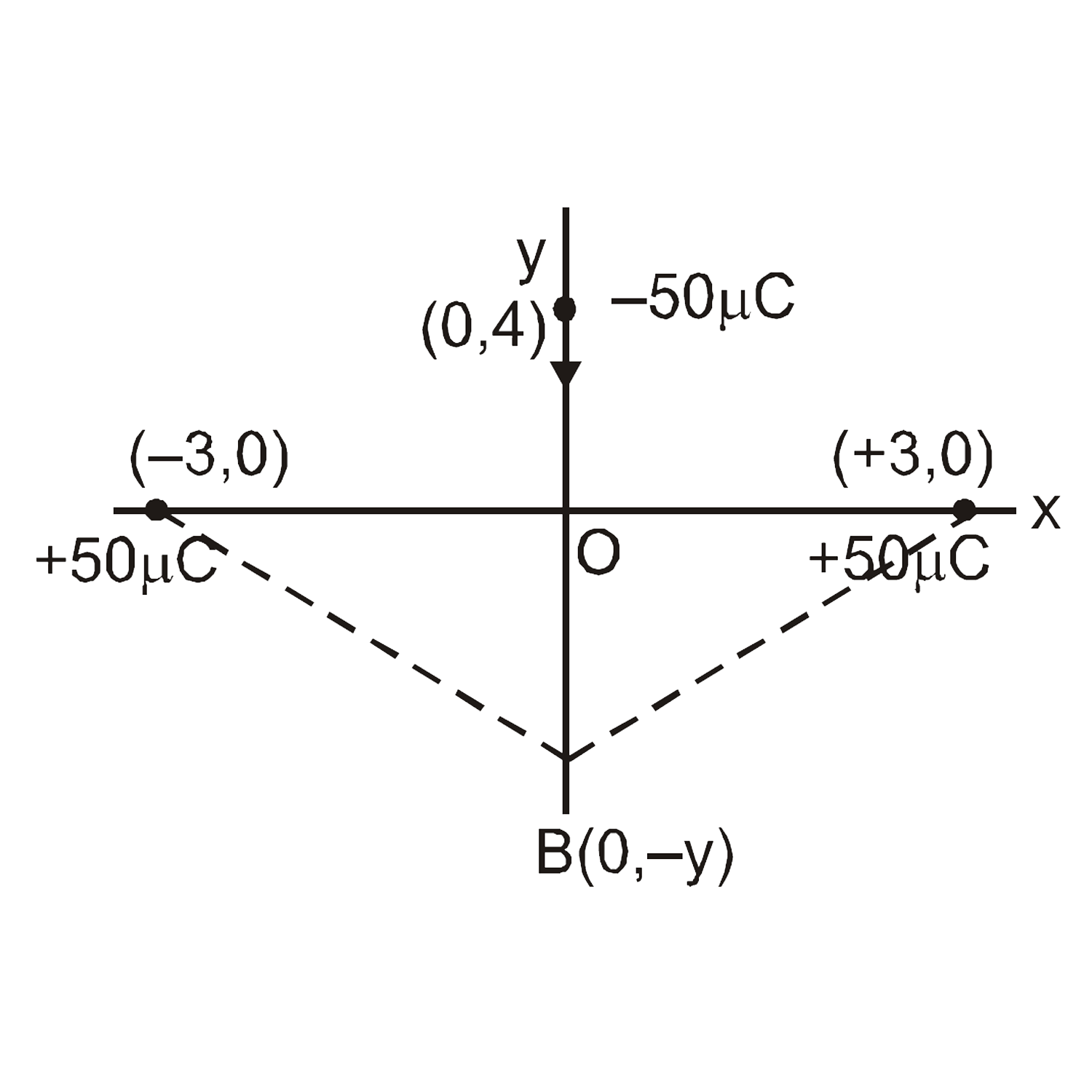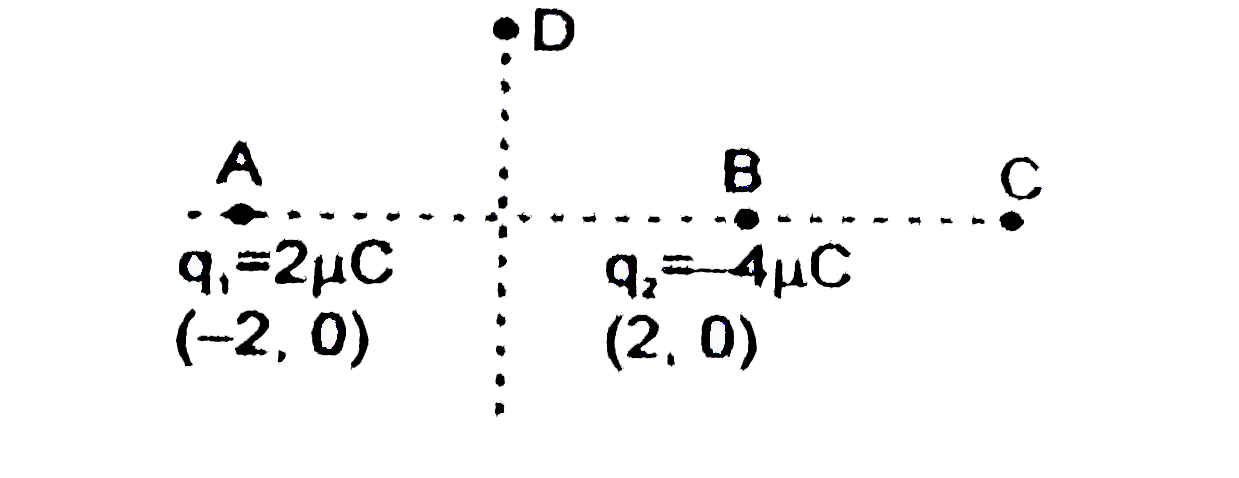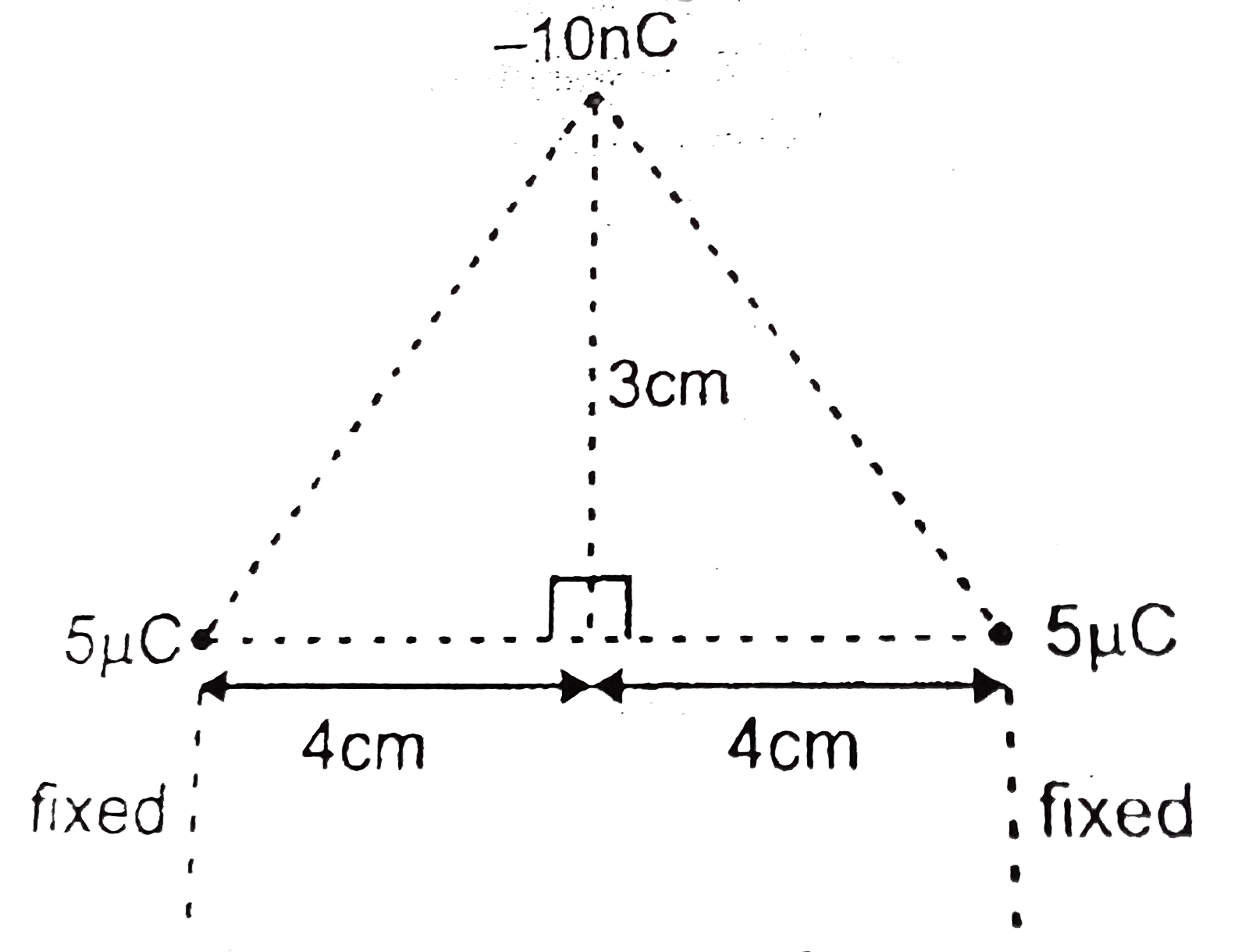
The figure shows two equal, positive charges, each of magnitude50μC, fixed at points (3, 0) m and (–3, 0)m
respectively. A charge –50μC, moving along negative y–axis has a kinetic energy of 4J at the instant it crosses
point (0,4)m. Determine the position of this charge where the direction of its motion reverses for the first time
after crossing this point (neglect gravity).
(0m,−7√2)
(0,−6√2m)
(0,−5√2)
(0m,−4√2)

The charge =50μC will move in straight line along y-axis as it does not experience any force in x-direction let B be the locatio where the charge comes to rest momentarily and them return. Total energy of the system, remai constant.
∴KE+PE
=4+14πε0(50×10−6)(−50×10−6)5×2
=0+14πε0(50×10−6)(−50×10−6)√32+y2×2
Topper's Solved these Questions
Similar Questions
two point charges 2μC and −4μC are situated at points (−2m,0m) and (2m,0m) respectively. Find out potential at point C(4m,0m) and D(0m,√5m).
 View Solution
View SolutionTwo point charges 8 μC and −8μC are kept at points (-2cm, 0) and (2cm, 0), respectively. Calculate the electric potential at points (0, 7cm) and (4cm, 0).
View Solution
Knowledge Check
- Question 1 - Select One
Two equal positive charges Q are fixed at points (a, 0) and (−a,0) on the x-axis. An opposite charge -q at rest is relased from point (0, a) on the y-axis. The charge -q will
AMove to infinityBMove to origin and rest thereCUndergo SHM about the originDExecute oscillatory motion but not SHM - Question 2 - Select One
Consider two positive point charges, each of magnitude q, placed on the y-axis at the points (0, a) and (0, -a). A positively charged particle of charge q' and mass m is displaced slightly from the origin in the direction of the positive x-axis.
At the origin, charge q' will be inAstable equilibriumBunstable equilibriumCneutral equilibriumDcannot determine - Question 3 - Select One
Two equal negative charges −q are fixed at points (0,−a) and (0,a) on y-axis. A poistive charge Q is released from rest at point (2a,0) on the x-axis. The charge Q will
A(a) execute simple harmonic motion about the originB(b) move to the origin remain at restC(c) move to infinityD(d) execute oscillatory but not simple harmonic motion
Two point charges 3μC and 2.5μC are placed at point A (1, 1, 2)m and B (0, 3, -1)m respectively. Find out electric field intensity at point C(3, 3, 3)m.
View SolutionTwo equal positive charges , Q , are fixed at points (0,d) and (0,−d) on the y-axis. A charged particle having charge −q and mass m is released from rest at point (d,0) on the x-axis . Discuss the motion of charged particle.
View Solution
Figure shows two fixed positive point charges of magnitude 5μC A negative point charge of −10nC and mass 1kg is released as shown in figure (consider only electrostatic foces)View SolutionConsider two positive point charges, each of magnitude q, placed on the y-axis at the points (0, a) and (0, -a). A positively charged particle of charge q' and mass m is displaced slightly from the origin in the direction of the positive x-axis.
Speed of charge q' at infinity isView SolutionConsider two positive point charges, each of magnitude q, placed on the y-axis at the points (0, a) and (0, -a). A positively charged particle of charge q' and mass m is displaced slightly from the origin in the direction of the positive x-axis.
At the origin, charge q' will be inView Solution
